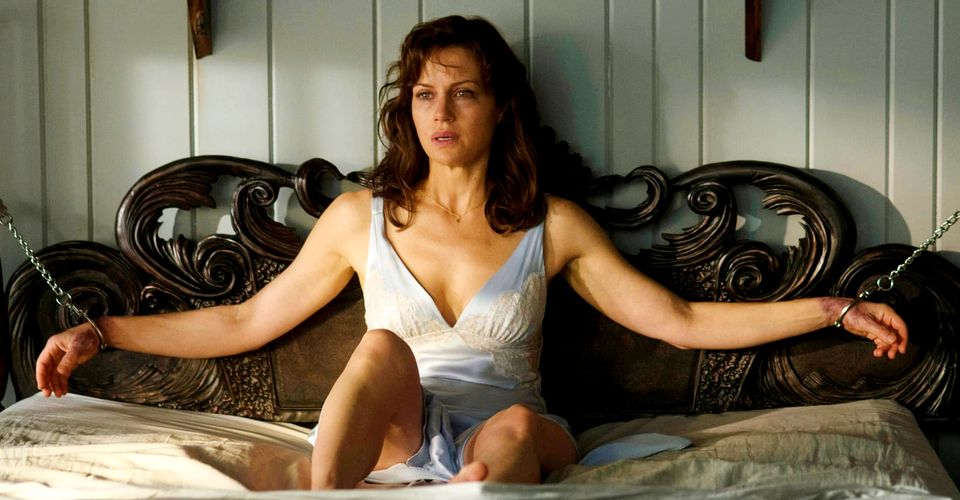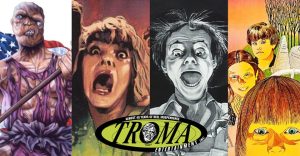Gerald’s Game: Every Major Difference Between The Book & Movie

Stephen King’s 1992 novel Gerald’s Game explores the terror of being trapped, both physically and mentally, which earned it the reputation of being impossible to adapt to film; Mike Flanagan’s interpretation was heralded as a success, despite some key differences between the book and movie. King’s book propels its harrowing plot along with help from internal narration, flashbacks and dreams, and director Mike Flanagan uses similar tactics in his film adaptation, making few alterations.
King’s novel follows a married couple, Jessie and Gerald, to their isolated cabin in Maine where they attempt to spice up their marriage during their romantic getaway. The titular game comes in the form of Jessie being handcuffed to a bedpost, giving Gerald complete control over her, a concept that clearly excites him. Their plan quickly goes awry when Gerald suffers a fatal heart attack, leaving Jessie chained to the bed.
Both the film and novel offer an emotional and frightening portrayal of constraint as Jessie fights to free herself from her current confines as well as the repressed trauma of her past. Through a series of flashbacks Jessie’s sexual abuse at the hands of her father is revealed, the event overshadowed in Jessie’s mind by an eclipse that took place the same day. King tells Jessie’s story with brutal delicacy, and while Flanagan successfully retains the author’s narrative and tone, there are still some notable differences between the two tellings.
Gerald’s Death

Flanagan’s film keeps the pacing of the increasingly tense scene leading up to Gerald’s death, but alters a key factor. In the film, Jessie agrees to the bondage but quickly becomes uncomfortable with the situation and asks Gerald to stop. After he ignores her protests, Jessie bits his lip, causing him to retreat and berate Jessie about the state of their marriage before suffering a heart attack. Gerald does not garner much sympathy in Flanagan’s film, but the character appears even more villainous in King’s book. Here, Gerald recognizes Jessie’s genuine discomfort, but acts as though she is playing along with the game; he fully intends to rape her. In a moment of self defense, Jessie delivers a strong kick to Gerald’s chest, igniting his heart attack and causing him to fall off the bed. A head wound solidifies his death.
The Voices in Jessie’s Head

Throughout King’s novel, Jessie hears voices in her head, all of which offer a different point of view and inspire her escape plan. In the book these voices consist of Ruth Neary, Jessie’s tough, outspoken college roommate; Nora Callighan, Jessie’s therapist, and occasionally an extension of herself, dubbed Goodwife. While the multiple voices work on paper, it becomes tricky to faithfully portray all the characters within the time limits of a film. Flanagan wisely condenses Jessie’s imaginary guides, having her hear a calm, confident version of herself and the belittling voice of Gerald, deepening the two characters as opposed to introducing new ones. Additionally, Jessie writes a letter to her young self at the end of the film as she begins to heal from the trauma of her childhood, while in the book she writes said letter to Ruth instead.
The Dolores Claiborne Connection

Fans of King’s work will recognize the film’s connection to his novel Dolores Claiborne, but the ties between the two stories are much more explicit in the book. Dolores Claiborne tells the story of a woman confessing to the murder of her husband, whom she killed after finding out he had been sexually abusing their teenage daughter. In Gerald’s Game, Jessie’s flashbacks of the family lake house eventually reveal that she was also sexually abused by her father, who then mentally manipulated her into keeping quiet. The 1963 summer eclipse that Jessie is abused during is the same eclipse witnessed by Dolores on the other side of the lake the day she pushes her husband into a well. Flanagan omits the parallel visions Jessie and Dolores have of one another in the book, choosing not to address the direct connection, but rather using it as a thematic Easter egg.
Mike Flanagan Film Universe Easter Eggs

Like Stephen King, Mike Flanagan enjoys planting Easter eggs throughout his work, building up the intricacies of his cinematic universe. Flanagan’s first Netflix film, Hush, focuses on Maddie, a deaf writer living in an isolated house where she is pursued by a masked, crossbow toting killer. The film mentions Maddie’s first book, Midnight Mass, and shows the cover when a neighbor returns a copy. In Gerald’s Game, the same book can be seen on the shelf above Jessie’s bed, the headboard of which is the Lasser Glass frame from Flanagan’s Oculus, placing the story within the director’s own universe.
About The Author

















